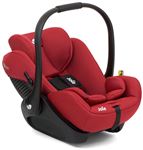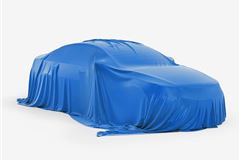29-09-2011:
One case of a failed drivers window regulator. By 13-6-2012 was subject to a TSB upgrade.
11-05-2013:
Report of 16,000 mile 2011 X3 making "pinking" noises and requiring a full new set of injectors under warranty before its first 2 yearly service.
18-08-2013:
Autobox failure on 2800 mile X3 30d purchased 1-6-2013.
27-08-2013:
"Scrubbing" sensation on full lock cured by BMW dealer replacing the fluid in the transfer box.
29-10-2013:
Failed EPAS steering column reported on 2012 X3 20d M Sport. Replaced under warranty.
25-01-2015:
Fuel economy of new 2.0 BMW B47 diesel engine with auto reported to be 8mpg worse after 3,000 miles use than older N47 engine in 2011 X3 .
15-04-2015:
Strange phenomenon of cracking of inside of standard (not xenon) headlight lenses on BMW X3 not yet 3 years old. BMW dealer at first blamed impact, but replaced under warranty.
03-12-2015:
Vibration reported from variablle suspension of 2014 X3 from 6000 miles, not caused by out of balance wheels as these were checked and rebalanced.
13-01-2016:
If the offside rear footwell fills with water, the reason is most likely to be that the rear hatch washer has frozen up. The washer fluid tube runs under the offside carpet and pressure from the pump can pop off a connector under the carpet near the gear selector.
13-07-2016:
Report of reader ordering an X3 with factory fitted towbar. When the car came it did not have the factory fitted towing equipment, so dealer offered to retrofit. But when fitting a tow-bar in the factory, the engine and transmission cooling systems are upgraded as are the drive-shafts The drive-shaft update is to allow for the published towing limits to be achieved. Without these changes the towing limit is lower and the engine and or transmission could overheat.
24-10-2016:
Report of 2010 X3 needing a new steering rack at 65k miles.
19-11-2016:
Report of door mounted tailgate release button of 11,000 mile 2014 BMW X3 has sinking into the tailgate.
08-01-2017:
Report of 2013 BMW X3 automatic needing new front brake discs and new pads all round at 24,000 miles.
13-04-2017:
Report of fuel gauge of 2014 X3 2.0 automatic over-reading leading to engine running out of fuel and all power assistance to brakes and steering being lost.
25-04-2017:
Report of sticking valve in engine of F25 X3 at 70,000 miles. BMW dealer diagnosed failure of timing chains and estimated $6,800.00 to repair engine.
13-07-2017:
Report of three failures of ABS wheel sensors on 72k mile 2011 BMW F25 X3 in 12 months. Each failure threw the car into "limp" mode, generated various on-screen messages including 4x4 failure and complete transmission failure, and required recovery of the car.
27-09-2017:
Report of new, 2017 BMW X3 kept in a gated community in South San Jose, California, opened and entered twice in 8 weeks, 2nd time all doors and hatchback left open. Seems that the scallywags boosted the signnal from the key to the 'keyless entry' car, making the car think the owner was beside it.
05-01-2018:
Report of Pirelli P7 245/55 R17 tyres on a late 2016 BMW X3 deflating overnight at minus 7C. Held pressure after being re-inflated, then lost pressure again overnight at minus 5C. Not known if valves or rimseals.
12-01-2018:
Report of TSB issued to owner of 2016 BMW X3 for an "engine management re boot". Since this, the lower button on the remote neither unlocks or opens the hatchback.
04-09-2018:
Report of failure of offside LED DRL on 2015 BMW F25 X3. BMW dealer quoted £1394 plus VAT to "replace all modules". Recommended a Small Claim on the basis that for a headlight DRL to have failed after 3.5 years the car cannot have been "of satisfactory quality" in the first place.
07-09-2018:
The combination of an X3 with Servotronic steering and 17-inch wheels with 225/60 R17s leaves a slack feel in the steering at the straight ahead position on a motorway, then a small amount of resistance when moving off centre. Some drivers find that a bit disconcerting, but it isn't a fault.
02-02-2019:
Report of computer closing down and the radio switching off in a September 2015 X3 2.0d. Within a few minutes the computer reboots. This is becoming more frequent.
20-04-2019:
Report of Connected Drive and SatNav of 2017 BMW F25 X3 failing while owner was on holiday with the car in Greece. Satnav just keeps rebooting itsself and never stays on for more than a minute between reboots.
04-05-2019:
Owner reported curing tyre noise on his BMW F25 X3 by fitting non-runflat Pirelli *P7C tyres at £159.09 each. The noise has gone and the new tyres give a better ride.
30-07-2019:
Sensible analysis of the reason for the fires in BMW (and Volvo) EGR coolers is the glycol content of the coolant which is itself flammable.
30-08-2019:
Complaint that the only 'factory fitted' twobar available on BMWs is a Westfalia electrically retractable one (instead of the previous manually detachable one). Reader had two fail on his 2013 X3, the first at less than one year old, replaced under warranty; the second this year at a replacement cost of £1500.
18-09-2019:
Report of "stuttering" or "surging" from 36k mile 2013/63 BMW X3 diesel during normal acceleration. BMW dealer replaced the EGR valve (for a very reasonable £340, though see:29-9-2018), but stuttering/surging continued. We thing probably dirty injectors and recommended a bottle of fuel system cleaner added to half a tank of diesel, then switching to Superdiesel once that had been used up.
15-11-2019:
Report of jerky gearchanges in 26k mile BMW F25 X3 35d, most noticeable when moving off, starting on a hill and in very slow moving traffic. Owner had transmission fluid drained and filter assembly replaced, but problem persists. He had read that this is a common problem with the xDrive transfer box. We diagnosed that the reason is most probably a disparity of more than 3mm between the tyres, which the xDrive interprets as slippage and engages the second diff when it is not necessary, leading toe excessive wear.
10-06-2020:
Report driver's front window failing to close. Owner told the regulator has failed and quoted £772 as parts can only be obtained from BMW and that both front window regulators have to be replaced at the same time (as they can only be ordered in pairs).
06-09-2020:
Report of auto gearbox problems with 2016 BMW X3 F25 2.0d. Car has done 28,000 miles and the automatic transmission drops out of Drive into Neutral. This happens when the car is stopped at a junction/traffic lights.
10-10-2020:
Report of knocking noise. Fault was caused by the boot catch, which wasn't lining up properly with the lock. Problems solved by simple lock adjustment.
November 2010
BMW X3 goes on sale
With a volume of between 550 and 1600 litres, the luggage compartment of the BMW X3 is also one of the best in its segment. The rear seat backrests can be split 60/40 as standard or as an option 40/20/40 where the three segments can be folded down either individually or together. In this way it is possible to adapt the luggage compartment according to requirements.
Powered by a 2.0-litre four-cylinder diesel engine with aluminium crankcase and common rail direct injection, the xDrive 20d delivers a maximum power output of 184PS at 4000rpm and peak torque of 380Nm between 1750 and 2750 rpm. This results in a 0-62mph time of 8.5 seconds, yet CO2 emissions are only 149g/km, with average fuel consumption of 50.4 mpg.
For drivers who want to personalise the feel of their BMW X3, Variable Damper Control is available for the first time. The electronically controlled dampers adapt to road surface conditions and the style of driving, while the driver is able to influence the action of the dampers by means of the Drive Dynamic Control system.
This function enables the driver to choose between Normal, Sport and Sport+ modes using a button on the centre console. As well as damping behaviour, it can adjust the character of the accelerator, engine response, power steering weight, DSC response thresholds and – depending on desired options – the shifting dynamics of the automatic transmission.
Electric Power Steering, is incorporated in the BMW X3 for the first time, allowing precise handling and increased efficiency. Variable sports steering is also available for the first time as an option, and reduces the degree of steering movement necessary to turn the front wheels in various conditions including parking, cornering and swerving manoeuvres.
As standard, the BMW X3 comes with xDrive permanent four-wheel drive, an electronically controlled system that ensures variable distribution of drive to the front and rear axles. Linked to DSC, Dynamic Stability Control, xDrive can counteract oversteer or understeer at an extremely early stage, and help to control the car through bends by sending increased drive to the rear wheels while, if needed, braking the inside rear wheel to increase the car’s mid-bend agility and traction.
At £30,490 OTR, it is actually £115 less than the outgoing model, yet is equipped as standard with Nevada leather upholstery, two-zone air conditioning, iDrive controller and colour display.
The BMW X3 can be specified with a range of innovative features. The choice of options range from a panoramic sunroof, high-end audio equipment and the Professional Multimedia package with hard-disk storage, to automatic boot lid operation and a tow coupling with electronically pivoting ball head.
The choice of systems offered under the BMW ConnectedDrive driver assistance banner is also unique in the segment, and include Head-up Display, Adaptive Headlights, High-beam Assistant and reversing camera including Top View, giving a 360 degree panoramic view for the driver.
Business Advanced Media package at £2,165 which includes Business navigation, Bluetooth with USB interface, voice control and telematics, and BMW Assist.
Professional Multimedia Media package at £2,465 which comprises the Professional navigation, Bluetooth with USB interface, voice control and telematics, and BMW Assist.
The Visibility package at £1,490 has xenon headlights, headlight wash, adaptive headlights, high-beam assistant and dimming and folding exterior mirrors.
A Cold weather package for £790 is available and comes with steering wheel heating, front and rear seat heating and through loading with 40/20/40 seat split.
August 2011
New engines added
The higher powered, higher specification X3 xDrive30d and X3 xDrive35d became available.
Benefitting from an eight-speed automatic gearbox as standard, the 3.0-litre engine in the X3 xDrive30d produces 258PS and 560Nm of torque to accelerate from zero to 62mph in just 6.2 seconds before going on to a top speed of 130mph. Emissions are 159g/km while returning a combined fuel consumption of 47.1mpg.
The BMW X3 xDrive35d produces an impressive 313PS and 630Nm of torque, taking it from zero to 62mph in just 5.8 seconds. It emits just 162g/km of CO2 while returning a combined fuel consumption of 46.3mpg.
The X3 xDrive30d is available with prices starting from £37,600 OTR for the SE and £39,975 OTR for the M Sport, while the X3 xDrive35d SE cost from £40,205 OTR and from £42,225 OTR for the M Sport.
| Model |
Power Hp |
Torque Nm |
0-62mph seconds |
Top speed mph |
Combined mpg |
Emissions g/km |
| BMW X3 xDrive30d |
258 |
560 |
6.2 |
130 |
47.1 |
159 |
| BMW X3 xDrive35d |
313 |
630 |
5.8 |
149 |
46.3 |
162 |
August 2012
BMW X3 sDrive18d announced
Rear-wheel drive only at £28,580. Powered by a 143PS 2.0-litre diesel engine, and available with either a six-speed manual or eight-speed automatic gearbox. BMW X3 sDrive18d emits 135g/km of CO2 and has a combined fuel consumption of 55.4mpg.
With exception of Hill Descent Control, X3 sDrive18d matches the standard equipment on the xDrive20d. SE models feature Auto Start-Stop, Drive Performance Control, 17-inch alloy wheels, Nevada Leather upholstery and BMW iDrive with a 6.5-inch colour screen. M Sport models feature a host of sporty additions such as 18-inch alloy wheels, M aerodynamic bodystyling, Sport seats and Sport suspension, amongst other items.
16-1-2013: New generation Professional Navigation System now available The latest generation of the BMW Professional Navigation System capable of locating 7 digit UK postcodes works even faster thanks to an extremely powerful processor, offering additional route display functions and sharp 3D graphics for all menus. From Spring 2013 this system will be available in all BMW 6 Series models, the new BMW 1 Series and in the BMW X3.
February 2014
BMW X3 revamped
Lead-in model BMW X3 sDrive18d (now £30,990 OTR) achieves a combined fuel consumption figure and CO2 emissions of 60.1mpg and 124g/km in the ECDC tests. Meanwhile, at the top of the range the new xDrive35d can reach 152mph and gets to sprint to 60mph from rest in just over 5 seconds, while still achieving over 47mpg in the EC tests.
Revisions to exterior styling identify the improved X3. At the front, new twin circular headlights – available in optional full LED specification along with optional LED front fog lamps – combine with the prominent BMW kidney grille and its new surround. Both the front and rear bumpers have gained new contours, while the LED indicators are now housed in the new exterior mirrors. There are four new exterior paint shades and five new light-alloy wheel designs to choose from. Inside, new cupholders, with a sliding cover, can be found in the centre console, and a leather steering wheel is amongst the standard equipment. There is a choice of four new upholstery colours and four new interior trims.
|
Model
|
Power (hp)
|
Torque (Nm)
|
0 – 62mph (seconds)
|
Top speed (mph)
|
Combined (mpg)
|
CO2 emissions (g/km)
|
|
BMW X3 sDrive18d
|
150
|
360
|
9.5 (9.8)
|
121
|
56.5 (55.4)
|
131 (133)
|
|
BMW X3 xDrive20d
|
190
|
400
|
8.1 (8.1)
|
131
|
52.3 (54.3)
|
143 (138)
|
|
BMW X3 xDrive30d
|
258
|
560
|
(5.9)
|
144
|
(47.9)
|
(156)
|
|
BMW X3 xDrive35d
|
313
|
630
|
(5.3)
|
152
|
(47.1)
|
(157)
|
The new-generation, all-aluminium, B47 2.0-litre diesel engines use common-rail direct injection with solenoid valve injectors and work with increased injection pressure of 2,000bar. This pushes the output of the X3 xDrive20d from 184PS up to 190PS, with the maximum torque available also rising from 380 to 400Nm.
The increase in performance cuts the zero to 60mph acceleration time by 0.4 seconds to just 7.8 seconds. At the same time, the fuel consumption of the X3 xDrive20d, when partnered with the eight-speed automatic gearbox, drops by 7.1 per cent in the EC tests compared to the outgoing model, and CO2 emissions are down to only 138g/km.
Furthermore, with a new optional 17-inch aero wheels and fourth-generation reduced-rolling-resistance tyres, CO2 emissions are cut by a further 7g/km. In this configuration, the X3 xDrive20d – in which the new 2.0-litre turbo-diesel engine premieres – delivers class-leading figures: fuel consumption is just 56.5mpg with CO2 emissions of only 131g/km in the EC tests.
The new 150PS X3 sDrive18d, with rear-wheel-drive, a six-speed manual gearbox and reduced rolling resistance tyres, is even more frugal. The optional 17-inch aero alloy wheel records just 60.1mpg, and CO2 emissions, at 124g/km in the EC tests
The new BMW X3 fange toppers are powered by further developed versions of BMW’s 3.0-litre, straight six turbo-diesel. The X3 xDrive30d does 0 to 62mph in 5.6 seconds, yet achieves an EC combined fuel consumption of 47.9mpg and CO2 emissions of 156g/km. It develops 258PS with a peak torque of 560Nm.
The flagship X3 is the X3 xDrive35d, 313hp and up to 630Nm of torque. Reaching 62mph in just over 5 seconds it has an EC combined fuel consumption of 47.1mpg and CO2 emissions of 157g/km – both reduced over the outgoing X3. The BMW X3 18d is available in two wheel drive sDrive form, while all other X3 models come with four wheel drive xDrive as standard.

.JPG?width=640&height=426&rmode=crop)
.JPG?width=640&height=426&rmode=crop)
.JPG?width=640&height=426&rmode=crop)
.JPG?width=640&height=426&rmode=crop)
.JPG?width=640&height=426&rmode=crop)
.JPG?width=640&height=426&rmode=crop)
.JPG?width=640&height=426&rmode=crop)


 Handling is impressive for an SUV, large boot capacity and lots of rear-seat space, top engine choices deliver serious performance.
Handling is impressive for an SUV, large boot capacity and lots of rear-seat space, top engine choices deliver serious performance.
 Engine range only consists of diesels, off-road ability is limited, interior of pre-2014 models looks cheap.
Engine range only consists of diesels, off-road ability is limited, interior of pre-2014 models looks cheap.


.jpg?width=240&height=160&rmode=crop)





 What is your car like to live with?
What is your car like to live with?


